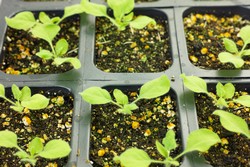How to build a plant
Plants have evolved developmental flexibility that allows them to shape their body and metabolism to survive often hostile environments. One of these responses is to control the shape of the plant through the auxin phytohormone. Over the past decades, researchers' understanding of auxin action and signalling has greatly improved. By contrast, the synthesis of auxin is still not fully defined in terms of the reactions and enzymes involved. The EU-funded SYSBIOAUX (A systems biology approach to disclose auxin synthesis in plants) initiative aimed to find the pathways by which auxin is synthesised in plants. The researchers used a systems biology approach on the model plant Arabidopsis thaliana. SYSBIOAUX studied the cross-talk between individual pathways that are thought to create auxin and regulate it in plants. The researchers used genomics, transcriptomics and metabolomics on the Arabidopsis thaliana model plant to understand this process. The project team was able to gain some insight into the genetic control of auxin synthesis. After further transcriptomic and metabolic studies, they created a model of a network of reactions that produces auxin. SYSBIOAUX was able to find a connection between auxin synthesis and plant stress responses, closing a long-standing gap in our knowledge of how plants grow.
Keywords
Plants, auxin, phytohormone, SYSBIOAUX, systems biology, auxin synthesis

